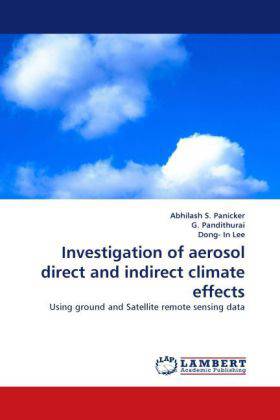
Door een staking bij bpost kan je online bestelling op dit moment iets langer onderweg zijn dan voorzien. Dringend iets nodig? Onze winkels ontvangen jou met open armen!
- Afhalen na 1 uur in een winkel met voorraad
- Gratis thuislevering in België vanaf € 30
- Ruim aanbod met 7 miljoen producten
Door een staking bij bpost kan je online bestelling op dit moment iets langer onderweg zijn dan voorzien. Dringend iets nodig? Onze winkels ontvangen jou met open armen!
- Afhalen na 1 uur in een winkel met voorraad
- Gratis thuislevering in België vanaf € 30
- Ruim aanbod met 7 miljoen producten
Zoeken
Investigation of Aerosol Direct and Indirect Climate Effects
Using ground and Satellite remote sensing data
Abhilash S Panicker, G Pandithurai, In Lee
Paperback | Engels
€ 58,45
+ 116 punten
Omschrijving
Aerosols, which are tiny particles suspended in the atmosphere, influences the climate directly and indirectly through radiative forcing. Aerosols reduce the ground-reaching solar radiation directly by scattering and absorption processes, known as direct radiative forcing. They influence the climate indirectly by modifying the cloud microphysics, known as aerosol indirect radiative forcing. It is found that the aerosol direct and indirect raditive effects can perturb the earth's radiation budget and tropospheric temperature profile, which can make changes even in precipitation patterns. Aerosol direct and indirect radiative forcing estimates have been revealed as one of the major uncertainties in global climate modeling. Uncertainty in determining aerosol radiative forcing is found to be larger than that of greenhouse gases. Hence it is necessary to estimate the aerosol direct and indirect forcing in climate change perspective. In this scenario, this book is intended to quantitatively estimate aerosol direct and indirect effects using ground and satellite remote sensing data sets.
Specificaties
Betrokkenen
- Auteur(s):
- Uitgeverij:
Inhoud
- Aantal bladzijden:
- 128
- Taal:
- Engels
Eigenschappen
- Productcode (EAN):
- 9783838396903
- Verschijningsdatum:
- 2/09/2010
- Uitvoering:
- Paperback
- Formaat:
- Trade paperback (VS)
- Afmetingen:
- 152 mm x 229 mm
- Gewicht:
- 199 g

Alleen bij Standaard Boekhandel
+ 116 punten op je klantenkaart van Standaard Boekhandel
Beoordelingen
We publiceren alleen reviews die voldoen aan de voorwaarden voor reviews. Bekijk onze voorwaarden voor reviews.











